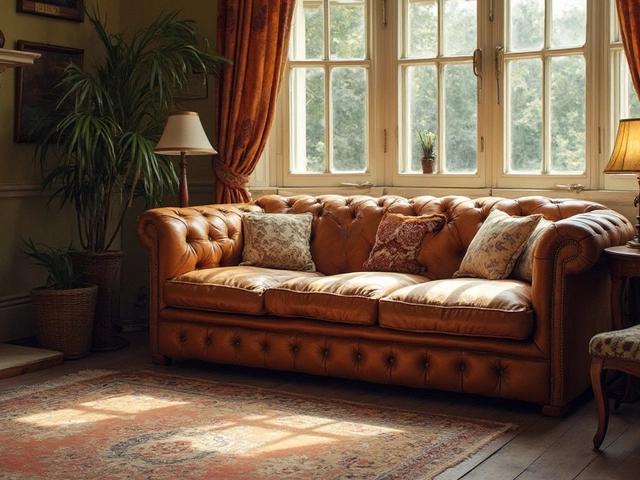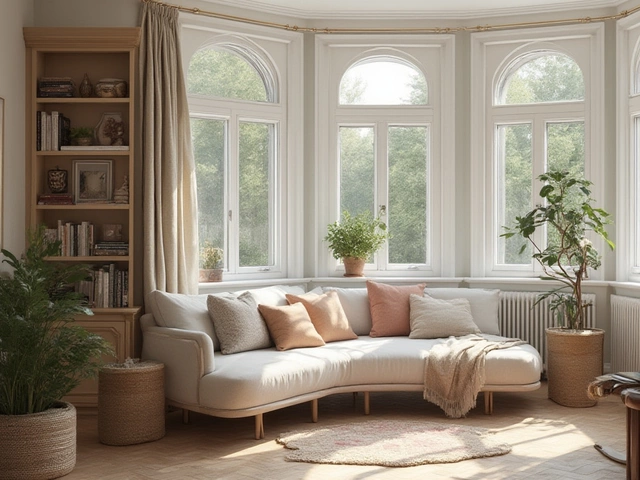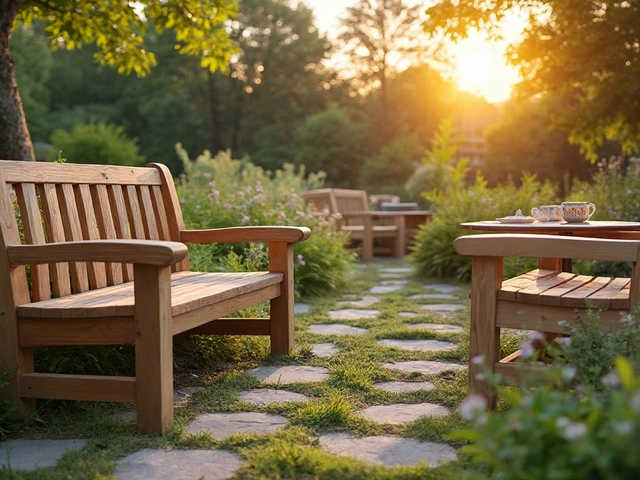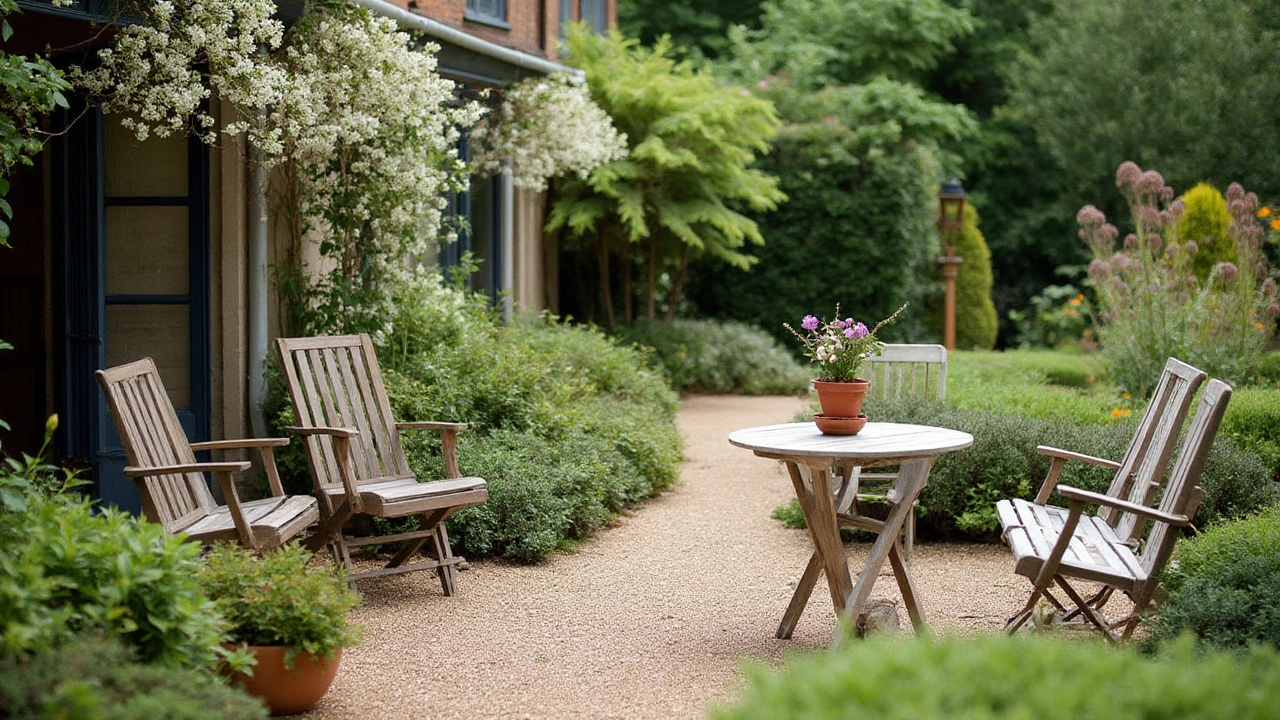 10
Nov,2024
10
Nov,2024
If you’re on the hunt for robust and stylish outdoor furniture, chances are you’ve come across POLYWOOD. This brand has made a name for itself by crafting long-lasting, environmentally conscious pieces from recycled materials. However, POLYWOOD isn’t the only player on the field.
Numerous brands compete with POLYWOOD, each bringing something unique to the table. Whether it's innovative designs, sustainable practices, or affordable pricing, these competitors offer viable alternatives for anyone looking to furnish their garden space. In this article, we'll walk through some of POLYWOOD's top competitors, share insights on eco-friendly options, and offer practical advice on selecting the ideal outdoor setup.
- Introduction to POLYWOOD and Its Unique Features
- Leading Competitors and Their Unique Offerings
- Eco-Friendly Alternatives in the Market
- Trends in Outdoor Furniture for 2024
- Tips for Choosing the Right Outdoor Furniture
Introduction to POLYWOOD and Its Unique Features
When it comes to outdoor furniture, POLYWOOD stands out as a trailblazer in the industry. Known for its commitment to sustainability and quality, POLYWOOD has carved a niche by focusing on environmentally friendly practices. The brand utilizes recycled plastics to create beautiful and durable furniture that can withstand the elements while reducing waste. This use of recycled materials not only helps in conserving natural resources but also offers an alternative solution to the rampant issue of plastic pollution. The furniture is crafted to mimic the look of wood while requiring minimal maintenance, making it an attractive choice for environmentally conscious consumers.
Founded in 1990 in Indiana, POLYWOOD started with a mission to innovate the use of recycled materials in furniture design. They pride themselves on the durability of their products, which are resistant to stains, corrosion, and intolerance to harsh weather conditions. This is achieved not just through the material itself, but through the quality of craftsmanship and attention to detail. Their product line includes everything from Adirondack chairs to dining sets, each piece designed not only for the backyard but also for eco-friendly living. A customer once shared, "The ease of maintaining POLYWOOD furniture is truly unmatched; it withstands our harsh Michigan winters beautifully," which sums up its resilience.
One of the defining features of POLYWOOD is its color-stay technology. Unlike wood furniture that can fade over time, the color in POLYWOOD products runs throughout the material, maintaining its vibrant hues despite prolonged sun exposure. This ensures that each piece retains its original beauty for years. Moreover, POLYWOOD furniture doesn’t peel or crack, problems often faced by traditional outdoor furniture materials. This longevity is a testament to the brand's engineering and an assurance that the furniture is a smart investment.
Developing furniture that is not just visually appealing but also environmentally responsible requires a commitment to innovation and sustainability. One of POLYWOOD’s key initiatives is their zero-waste manufacturing process, which aims to minimize impact on the environment. By collecting and repurposing scraps and off-cuts, POLYWOOD ensures that nearly every part of their manufacturing process contributes to the creation of their signature furniture. As per their sustainability report, POLYWOOD recycled over 400,000 pounds of scrap every month last year.
"The combination of the recycled materials and quality craftsmanship makes POLYWOOD a leader in outdoor furniture," said a furniture industry analyst, highlighting the brand’s ability to incorporate green technologies without compromising on aesthetics or function.As people more frequently seek sustainable options for their homes, POLYWOOD continues to meet this demand by not only providing practical furniture solutions but also encouraging a lifestyle that respects and preserves our natural environment. With such compelling features, POLYWOOD remains a top choice for consumers looking for garden furniture that harmonizes style, sustainability, and durability.
Leading Competitors and Their Unique Offerings
When you dig into the world of outdoor furniture, it becomes clear that POLYWOOD, with its signature recycled plastic lumber, isn't alone in its quest for quality and sustainability. Many brands have stepped up, offering comparable, if not superior, garden furniture that caters to a variety of tastes and preferences. Among them, Trex Outdoor Furniture stands out, often preferred by those who admire its familiarity with another popular outdoor material—wood-plastic composites. Created from a blend of wood fibers and plastic, Trex products are not only stylish but also incredibly resilient against the harsh elements that furniture faces when left outside.
One of Trex's most attractive features is its nearly unrivaled resistance to fading, crushing, and even insects. Its designs are classic yet functional, echoing a sophistication that many homeowners look for in their backyards. A strong contender in the same field is the brand, Brown Jordan, known for its high-end design and comfort that marry both modern and traditional aesthetics. Brown Jordan focuses heavily on providing fashionable solutions that don't just fit into any patio but elevate it. Known for their aesthetics, they often employ high-quality metals, like aluminum, which lend a sleek edge while remaining lightweight and movable, which is perfect for families that like to alter their space layout with the seasons.
Still, if sustainability pulls you in, consider another rival – Loll Designs. Loll prides itself on being eco-friendly, using primarily recycled milk jugs to create their contemporary chic furniture. Their business model emphasizes minimizing environmental impact and reducing waste. Customers love their no-fuss assembly and vibrant color palette. A recent market analysis revealed that over 30% of consumers prioritize eco-friendliness as a key decision factor when purchasing outdoor furniture. An interesting fact is that Loll Designs repurposes over 8 million milk jugs yearly, contributing significantly to reducing landfill waste.
According to Randy Johnson, a well-respected designer in the furniture industry, "The future of outdoor furniture lies in both sustainability and adaptability. Customers are not only looking for products that last but ones that serve the Earth well."
Competitors like Keter also make a significant mark, appealing to budget-conscious buyers who don’t wish to compromise on style or durability. Keter offers myriad materials, including resin, known for its water-resistant, mildew-repellant qualities. Their focus is on bringing affordable designs to families, consistently evolving with trends while sticking to affordable price points. Their products often come with cleverly integrated storage solutions, an excellent choice for urban spaces with limited square footage.
The choice, then, boils down to what matters the most to you. Do you value the craftsmanship and reliability of Trex, the avant-garde look of Brown Jordan, the eco-consciousness of Loll Designs, or the practicality and affordability offered by Keter? Each brand has carved its niche in the competitive garden furniture landscape, vying for attention while ensuring consumers have choices that best fit their personal ethos and style preferences.

Eco-Friendly Alternatives in the Market
When it comes to outdoor furniture, making environmentally responsible choices is becoming increasingly important. Many manufacturers are stepping up to offer eco-friendly options that appeal to conscious consumers. One notable trend is the growing use of sustainable materials like recycled plastics, reclaimed wood, and responsibly sourced bamboo. These materials not only help reduce waste but also provide durable and aesthetically pleasing products. Taking POLYWOOD as an inspiration, Kaiyo, an innovative player in the market, utilizes similar recycling strategies to craft its appealing furniture lineup.
In addition to material choices, several brands are committed to reducing their carbon footprint by adopting sustainable production methods. For example, Fermob, a pioneer from France, employs eco-designed manufacturing processes. They focus on limiting their environmental impact through energy efficiency and reducing emissions. Many of their pieces feature classic designs, an array of vibrant colors, and practical, user-friendly assembly. Another brand, Loll Designs, known for quirky, modern aesthetics, turns discarded milk jugs into striking outdoor collections.
"Green furniture isn’t just a trend; it’s a growing necessity," says a Sustainable Furnishings Council spokesperson. "Brands are not just thinking about today’s design but also tomorrow’s environment."
Eco-conscious enthusiasts often seek certifications that signify a product's sustainability. Certifications from organizations like the Forest Stewardship Council (FSC) and the Greenguard Environmental Institute serve as assurances of quality and environmental compliance, providing buyers with peace of mind. A thoughtful consumer might look for these badges of honor when shopping for their garden pieces. Companies are leveraging such certifications to attest to their commitment to high standards and ethical operations.
Why Choose Eco-Friendly Furniture?
Aside from environmental benefits, eco-friendly furniture can also mean exceptional durability and style. When you opt for a sustainably sourced chair, you don't just invest in the aesthetics of your patio; you invest in the planet’s future. Many consumers find that these green options come with robust warranties, offering reassurance that these pieces will adorn their gardens for seasons to come. Choosing these alternatives is not only a choice for your home but a vote for a healthier world. The beauty of this bold choice lies in its potential to spark change, something echoed by many design experts.
To sum up, the market for eco-friendly outdoor furnishings is flourishing, expanding product portfolios to meet the rising demand. By choosing brands that prioritize green processes and renewable resources, consumers are now able to enjoy beautiful outdoor spaces without any guilt. As awareness grows, the offerings are sure to become even more diverse and exciting, bringing innovative designs and unprecedented eco-consciousness into our homes and gardens.
Trends in Outdoor Furniture for 2024
As the seasons change, so do the preferences in outdoor furniture, where style meets durability and function. In 2024, the trends are reflecting a stronger focus on merging indoors and outdoors, creating cohesive living experiences. One of the standouts of this year is the increasing use of natural materials like wicker and teak, which blend effortlessly into natural landscapes. These materials not only provide an organic look but are remarkable for their weather-resistant properties. Additionally, sustainable production methods are gaining traction as consumers become more eco-conscious, pushing brands to innovate with materials like recycled polymers, similar to those used by POLYWOOD. An interesting shift is the introduction of earthy tones combined with vibrant accents, providing a modern yet rustic appearance to garden spaces.
Another fascinating trend is the rise of multifunctional and space-saving designs. As urban living spaces continue to shrink, outdoor furniture that serves more than one purpose is becoming incredibly popular. Think of modular furniture pieces that can be reconfigured to fit different settings or items that come with hidden storage to maximize utility. The emphasis on comfort cannot be overstated as well; plush, high-quality cushions that are both water and UV resistant are in high demand, bolstering the outdoor experience. There's also a move towards integrating technology into outdoor spaces, with features like LED lighting, wireless charging stations, and Bluetooth speakers, enhancing convenience and ambiance for users.
According to a recent report from Expedia, "The creation of seamless indoor-outdoor living spaces is no longer just desirable. It’s now a necessity for many homeowners who view their gardens as extensions of their homes."
According to a recent industry report, consumer demand for outdoor living areas increased by 15% in the past year alone, signaling a shift in homeowner priorities.Whether it’s the use of mixed materials such as metals and textiles for a modern rustic feel or designs that echo mid-century modern aesthetics, there’s something for every taste in this year's trends. Pairing timeless style with modern convenience, these trends highlight a pivotal change in how people perceive outdoor spaces.
| Material | Benefit |
|---|---|
| Teak | Durable and water-resistant |
| Wicker | Lightweight and easy to maintain |
| Recycled Polymers | Eco-friendly and robust |
Finally, personalized experiences are becoming key in outdoor furniture trends for 2024. Homeowners are seeking not just functionality but a reflection of their personal lifestyle and tastes. This includes everything from bespoke furniture pieces with intricate craftsmanship to customizable features that allow individuals to alter the look and feel of their outdoor furniture set. The customization craze is also reflected in the demand for unique color blends and artistic designs, making each exterior space a one-of-a-kind retreat.
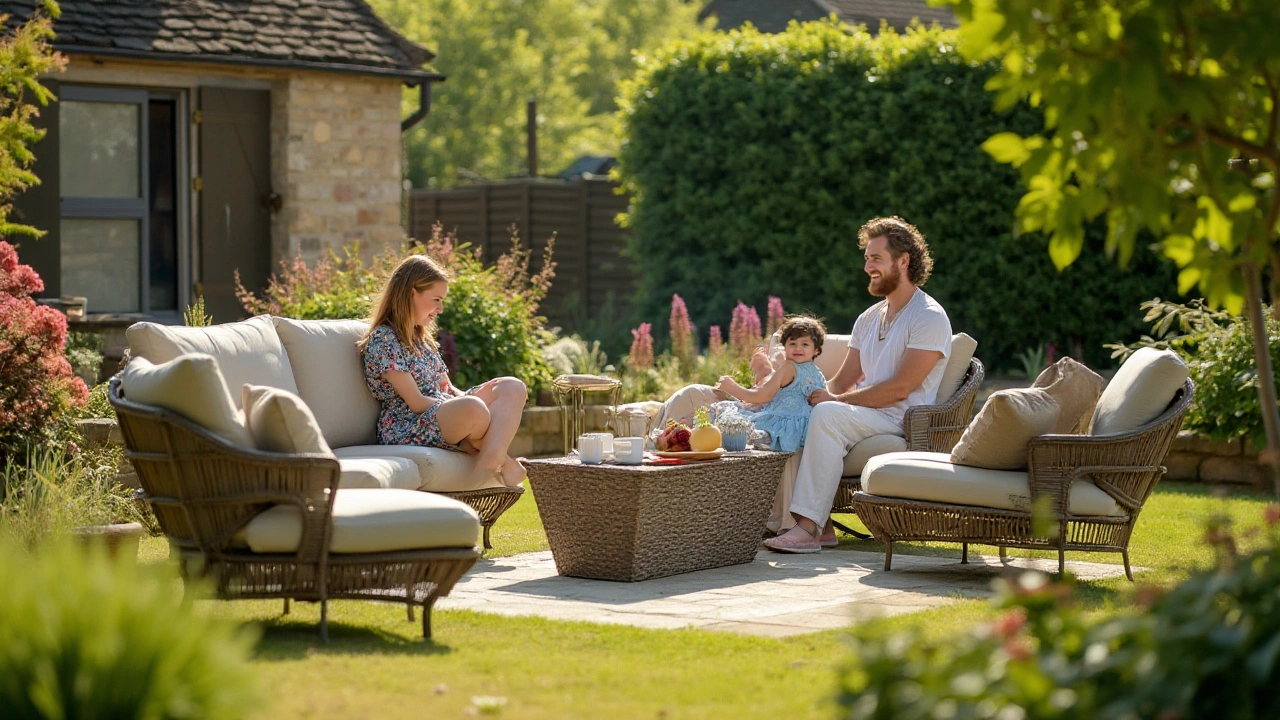
Tips for Choosing the Right Outdoor Furniture
When it comes to selecting the perfect outdoor furniture, there are several things one ought to consider to ensure both aesthetics and functionality align effortlessly. Start by assessing the available space, as this will determine the size and type of furniture that fits best. Whether you have a sprawling backyard or a compact balcony, every inch counts, so take measurements to avoid under- or over-furnishing. Balancing comfort with style is key, so think about how you'll typically use the area—be it for family gatherings, solo lounging, or hosting dinner parties. With purpose in mind, you can choose pieces that cater specifically to those activities.
Material selection is another crucial factor in the decision-making process. Outdoor settings expose furniture to the elements, requiring choices that endure over time. Recycled plastic, like that used by POLYWOOD, has risen in popularity due to its durability and low maintenance, making it a superb option for many. However, teak, aluminum, and wrought iron have their own benefits, too. Teak is loved for its natural resistance to weather changes and pests, whereas aluminum and wrought iron offer lightweight maneuverability and classic appeal, respectively. Remember that each material comes with its care requirements, influencing the longevity of your furniture.
Color and design are not merely aesthetic concerns, as they factor heavily into the mood and vibe of your outdoor space. Neutral hues offer timeless elegance and flexibility, allowing for seasonal décor changes without mismatches. Conversely, bold colors can make a statement, breathing life into understated surroundings. Mixing and matching styles can inject personality, but tread carefully to avoid a chaotic look. Seek harmony in shades and shapes, playing with textures to create a pleasing balance. As a rule of thumb, envision how the ensemble will look year-round, especially if you live in regions with significant seasonal variations.
It's wise to set a realistic budget before plunging into a shopping spree. Outdoor furniture can be an investment, and costs can quickly escalate if one isn't careful. Prioritize must-have pieces and consider long-term value over short-lived fads. While top-tier brands like POLYWOOD offer assurance with extended warranties and proven track records, emerging brands may offer more competitive pricing with equally compelling designs. Don't be afraid to compare and contrast. Savvy buyers will explore a mix of new and second-hand markets to potentially snag unbelievable deals. Always read reviews and seek recommendations wherever possible.
Lastly, do not underestimate the power of comfort testing when possible. It might seem natural to opt for online purchases due to their convenience, but if an opportunity arises to physically test the furniture, it's worth taking the time. Sitting, lounging, and interacting with the pieces can reveal details you'd miss otherwise. Adjustability, cushion support, and ergonomics all play into the comfort level, so spend a moment longer in contemplation before swiping that credit card. As Aristotle once said,
“Quality is not an act, it is a habit.”Let this mantra guide your choice to ensure happiness in your backyard haven for years to come.
